1N5401 Standard Recovery Rectifier: Datasheet, Schematics and Equivalents
Standard Diode Rectifier Standard Recovery >500ns, > 200mA (Io) 1.2V @ 3A -55°C~150°C 5μA @ 100V Tape & Reel (TR) DO-201AD, Axial Through Hole
Unit Price: $0.050844
Ext Price: $0.05









Standard Diode Rectifier Standard Recovery >500ns, > 200mA (Io) 1.2V @ 3A -55°C~150°C 5μA @ 100V Tape & Reel (TR) DO-201AD, Axial Through Hole
1N5401 is a Standard Recovery Rectifier designed for use in power supplies and other applications. This article enforces datasheet, pinout, features, equivalents, and more details about 1N5401 diodes. Furthermore, there is a huge range of semiconductors, capacitors, resistors, and Ics in stock. Welcome RFQ!

Difference between Diode, Schottky and Zener Diode (Types of Diode)
1N5401 Pinout

1N5401 Pinout
1N5401 CAD Model
Symbol

Symbol
Footprint

Footprint
What is 1N5401?
1N5401 is an axially leaded general-purpose rectifier in a DO-201AD package. It has a low leakage rate and a high current capacity. Vrrm is the maximum repeated reverse voltage. The IFSM of 200A is a non-repetitive forward surge current. If(AV) has a forward current of 3A.
Specifications
- TypeParameter
- Contact Plating
Contact plating (finish) provides corrosion protection for base metals and optimizes the mechanical and electrical properties of the contact interfaces.
Tin - Mount
In electronic components, the term "Mount" typically refers to the method or process of physically attaching or fixing a component onto a circuit board or other electronic device. This can involve soldering, adhesive bonding, or other techniques to secure the component in place. The mounting process is crucial for ensuring proper electrical connections and mechanical stability within the electronic system. Different components may have specific mounting requirements based on their size, shape, and function, and manufacturers provide guidelines for proper mounting procedures to ensure optimal performance and reliability of the electronic device.
Through Hole - Mounting Type
The "Mounting Type" in electronic components refers to the method used to attach or connect a component to a circuit board or other substrate, such as through-hole, surface-mount, or panel mount.
Through Hole - Package / Case
refers to the protective housing that encases an electronic component, providing mechanical support, electrical connections, and thermal management.
DO-201AD, Axial - Number of Pins2
- Supplier Device Package
The parameter "Supplier Device Package" in electronic components refers to the physical packaging or housing of the component as provided by the supplier. It specifies the form factor, dimensions, and layout of the component, which are crucial for compatibility and integration into electronic circuits and systems. The supplier device package information typically includes details such as the package type (e.g., DIP, SOP, QFN), number of pins, pitch, and overall size, allowing engineers and designers to select the appropriate component for their specific application requirements. Understanding the supplier device package is essential for proper component selection, placement, and soldering during the manufacturing process to ensure optimal performance and reliability of the electronic system.
DO-201AD - Weight4.535924g
- Packaging
Semiconductor package is a carrier / shell used to contain and cover one or more semiconductor components or integrated circuits. The material of the shell can be metal, plastic, glass or ceramic.
Tape & Reel (TR) - Published2000
- Part Status
Parts can have many statuses as they progress through the configuration, analysis, review, and approval stages.
Obsolete - Moisture Sensitivity Level (MSL)
Moisture Sensitivity Level (MSL) is a standardized rating that indicates the susceptibility of electronic components, particularly semiconductors, to moisture-induced damage during storage and the soldering process, defining the allowable exposure time to ambient conditions before they require special handling or baking to prevent failures
1 (Unlimited) - Max Operating Temperature
The Maximum Operating Temperature is the maximum body temperature at which the thermistor is designed to operate for extended periods of time with acceptable stability of its electrical characteristics.
125°C - Min Operating Temperature
The "Min Operating Temperature" parameter in electronic components refers to the lowest temperature at which the component is designed to operate effectively and reliably. This parameter is crucial for ensuring the proper functioning and longevity of the component, as operating below this temperature may lead to performance issues or even damage. Manufacturers specify the minimum operating temperature to provide guidance to users on the environmental conditions in which the component can safely operate. It is important to adhere to this parameter to prevent malfunctions and ensure the overall reliability of the electronic system.
-65°C - Capacitance
Capacitance is a fundamental electrical property of electronic components that describes their ability to store electrical energy in the form of an electric field. It is measured in farads (F) and represents the ratio of the amount of electric charge stored on a component to the voltage across it. Capacitors are passive components that exhibit capacitance and are commonly used in electronic circuits for various purposes such as filtering, energy storage, timing, and coupling. Capacitance plays a crucial role in determining the behavior and performance of electronic systems by influencing factors like signal propagation, frequency response, and power consumption.
30pF - Voltage - Rated DC
Voltage - Rated DC is a parameter that specifies the maximum direct current (DC) voltage that an electronic component can safely handle without being damaged. This rating is crucial for ensuring the proper functioning and longevity of the component in a circuit. Exceeding the rated DC voltage can lead to overheating, breakdown, or even permanent damage to the component. It is important to carefully consider this parameter when designing or selecting components for a circuit to prevent any potential issues related to voltage overload.
100V - Current Rating
Current rating is the maximum current that a fuse will carry for an indefinite period without too much deterioration of the fuse element.
3A - Base Part Number
The "Base Part Number" (BPN) in electronic components serves a similar purpose to the "Base Product Number." It refers to the primary identifier for a component that captures the essential characteristics shared by a group of similar components. The BPN provides a fundamental way to reference a family or series of components without specifying all the variations and specific details.
1N5401 - Polarity
In electronic components, polarity refers to the orientation or direction in which the component must be connected in a circuit to function properly. Components such as diodes, capacitors, and LEDs have polarity markings to indicate which terminal should be connected to the positive or negative side of the circuit. Connecting a component with incorrect polarity can lead to malfunction or damage. It is important to pay attention to polarity markings and follow the manufacturer's instructions to ensure proper operation of electronic components.
Standard - Element Configuration
The distribution of electrons of an atom or molecule (or other physical structure) in atomic or molecular orbitals.
Single - Speed
In electronic components, "Speed" typically refers to the rate at which data can be processed or transferred within the component. It is a measure of how quickly the component can perform its functions, such as executing instructions or transmitting signals. Speed is often specified in terms of frequency, such as clock speed in processors or data transfer rate in memory modules. Higher speed components can perform tasks more quickly, leading to improved overall performance in electronic devices. It is an important parameter to consider when designing or selecting electronic components for specific applications.
Standard Recovery >500ns, > 200mA (Io) - Diode Type
In electronic components, the parameter "Diode Type" refers to the specific type or configuration of a diode, which is a semiconductor device that allows current to flow in one direction only. There are various types of diodes, each designed for specific applications and functions. Common diode types include rectifier diodes, zener diodes, light-emitting diodes (LEDs), and Schottky diodes, among others. The diode type determines the diode's characteristics, such as forward voltage drop, reverse breakdown voltage, and maximum current rating, making it crucial for selecting the right diode for a particular circuit or application. Understanding the diode type is essential for ensuring proper functionality and performance in electronic circuits.
Standard - Current - Reverse Leakage @ Vr
Current - Reverse Leakage @ Vr is a parameter that describes the amount of current that flows in the reverse direction through a diode or other semiconductor component when a reverse voltage (Vr) is applied across it. This leakage current is typically very small, but it is important to consider in electronic circuits as it can affect the overall performance and reliability of the component. The reverse leakage current is influenced by factors such as the material properties of the semiconductor, temperature, and the magnitude of the reverse voltage applied. Manufacturers provide this parameter in datasheets to help engineers and designers understand the behavior of the component in reverse bias conditions.
5μA @ 100V - Power Dissipation
the process by which an electronic or electrical device produces heat (energy loss or waste) as an undesirable derivative of its primary action.
6.25W - Output Current
The rated output current is the maximum load current that a power supply can provide at a specified ambient temperature. A power supply can never provide more current that it's rated output current unless there is a fault, such as short circuit at the load.
3A - Voltage - Forward (Vf) (Max) @ If
The parameter "Voltage - Forward (Vf) (Max) @ If" refers to the maximum voltage drop across a diode when it is forward-biased and conducting a specified forward current (If). It indicates the maximum potential difference the diode can withstand while allowing current to flow in the forward direction without breaking down. This value is crucial for designing circuits as it helps determine how much voltage will be lost across the diode during operation. Higher Vf values can lead to reduced efficiency in power applications, making this parameter essential for optimizing circuit performance.
1.2V @ 3A - Forward Current
Current which flows upon application of forward voltage.
3A - Operating Temperature - Junction
Operating Temperature - Junction refers to the maximum temperature at which the junction of an electronic component can safely operate without causing damage or performance degradation. This parameter is crucial for determining the reliability and longevity of the component, as excessive heat can lead to thermal stress and failure. Manufacturers specify the operating temperature range to ensure that the component functions within safe limits under normal operating conditions. It is important for designers and engineers to consider the operating temperature - junction when selecting and using electronic components to prevent overheating and ensure optimal performance.
-55°C~150°C - Max Surge Current
Surge current is a peak non repetitive current. Maximum (peak or surge) forward current = IFSM or if(surge), the maximum peak amount of current the diode is able to conduct in forward bias mode.
200A - Voltage - DC Reverse (Vr) (Max)
Voltage - DC Reverse (Vr) (Max) is a parameter in electronic components that specifies the maximum reverse voltage that the component can withstand without breaking down. This parameter is crucial for components like diodes and transistors that are often subjected to reverse voltage during operation. Exceeding the maximum reverse voltage can lead to the component failing or getting damaged. Designers need to consider this parameter when selecting components to ensure the reliability and longevity of their circuits.
100V - Current - Average Rectified (Io)
The parameter "Current - Average Rectified (Io)" in electronic components refers to the average value of the rectified current flowing through the component. This parameter is important in determining the average power dissipation and thermal considerations of the component. It is typically specified in datasheets for diodes, rectifiers, and other components that handle alternating current (AC) and convert it to direct current (DC). Understanding the average rectified current helps in selecting the appropriate component for a given application to ensure reliable operation and prevent overheating.
3A - Forward Voltage
the amount of voltage needed to get current to flow across a diode.
1.2V - Max Reverse Voltage (DC)
Max Reverse Voltage (DC) refers to the maximum voltage that a semiconductor device, such as a diode, can withstand in the reverse bias direction without failing. Exceeding this voltage can lead to breakdown and potential damage to the component. It is a critical parameter in circuit design to ensure reliability and prevent failure when the device is subjected to reverse voltage conditions.
100V - Average Rectified Current
Mainly used to characterize alternating voltage and current. It can be computed by averaging the absolute value of a waveform over one full period of the waveform.
3A - Peak Reverse Current
The maximum voltage that a diode can withstand in the reverse direction without breaking down or avalanching.If this voltage is exceeded the diode may be destroyed. Diodes must have a peak inverse voltage rating that is higher than the maximum voltage that will be applied to them in a given application.
5μA - Max Repetitive Reverse Voltage (Vrrm)
The Max Repetitive Reverse Voltage (Vrrm) is a crucial parameter in electronic components, particularly in diodes and transistors. It refers to the maximum voltage that can be applied across the component in the reverse direction without causing damage. This parameter is important for ensuring the proper functioning and longevity of the component in circuits where reverse voltage may be present. Exceeding the Vrrm rating can lead to breakdown and failure of the component, so it is essential to carefully consider this specification when designing or selecting components for a circuit.
100V - Capacitance @ Vr, F
Capacitance @ Vr, F refers to the capacitance value of a capacitor measured at a specified rated voltage (Vr). It indicates how much electrical charge the capacitor can store per volt when subjected to this voltage. This parameter is essential for understanding the behavior of capacitors in circuits, particularly under different voltage conditions, and ensures that the component operates within its safe limits. The unit of measurement is Farads (F), which quantifies the capacitor's ability to hold an electrical charge.
30pF @ 4V 1MHz - Peak Non-Repetitive Surge Current
Peak Non-Repetitive Surge Current is a specification in electronic components that refers to the maximum current that the component can withstand for a short duration without sustaining damage. This surge current typically occurs as a result of sudden voltage spikes or transient events in the circuit. It is important to consider this parameter when designing or selecting components to ensure they can handle occasional high-current surges without failing. The value of Peak Non-Repetitive Surge Current is usually specified in amperes and is crucial for protecting the component and maintaining the overall reliability of the circuit.
200A - Reverse Voltage
the voltage drop across the diode if the voltage at the cathode is more positive than the voltage at the anode
100V - Max Forward Surge Current (Ifsm)
Max Forward Surge Current (Ifsm) is a parameter used to specify the maximum peak current that a diode or other electronic component can withstand for a short duration during a surge event. Surge currents can occur due to sudden changes in voltage or power supply fluctuations, and the Ifsm rating helps determine the component's ability to handle such transient overloads without being damaged. It is important to consider the Ifsm rating when selecting components for applications where surge currents are expected, such as in power supplies, motor drives, and other high-power circuits. Exceeding the Ifsm rating can lead to overheating, degradation, or failure of the component, so it is crucial to ensure that the chosen component can safely handle the expected surge currents in the circuit.
200A - Diameter
In electronic components, the parameter "Diameter" typically refers to the measurement of the width of a circular component, such as a resistor, capacitor, or inductor. It is a crucial dimension that helps determine the physical size and fit of the component within a circuit or on a circuit board. The diameter is usually measured in millimeters (mm) or inches (in) and is important for ensuring proper placement and soldering of the component during assembly. Understanding the diameter of electronic components is essential for selecting the right size for a specific application and ensuring compatibility with other components and the overall design of the circuit.
5.6mm - Height5.6mm
- Length9.5mm
- Width5.6mm
- REACH SVHC
The parameter "REACH SVHC" in electronic components refers to the compliance with the Registration, Evaluation, Authorization, and Restriction of Chemicals (REACH) regulation regarding Substances of Very High Concern (SVHC). SVHCs are substances that may have serious effects on human health or the environment, and their use is regulated under REACH to ensure their safe handling and minimize their impact.Manufacturers of electronic components need to declare if their products contain any SVHCs above a certain threshold concentration and provide information on the safe use of these substances. This information allows customers to make informed decisions about the potential risks associated with using the components and take appropriate measures to mitigate any hazards.Ensuring compliance with REACH SVHC requirements is essential for electronics manufacturers to meet regulatory standards, protect human health and the environment, and maintain transparency in their supply chain. It also demonstrates a commitment to sustainability and responsible manufacturing practices in the electronics industry.
No SVHC - Radiation Hardening
Radiation hardening is the process of making electronic components and circuits resistant to damage or malfunction caused by high levels of ionizing radiation, especially for environments in outer space (especially beyond the low Earth orbit), around nuclear reactors and particle accelerators, or during nuclear accidents or nuclear warfare.
No - RoHS Status
RoHS means “Restriction of Certain Hazardous Substances” in the “Hazardous Substances Directive” in electrical and electronic equipment.
RoHS Compliant - Lead Free
Lead Free is a term used to describe electronic components that do not contain lead as part of their composition. Lead is a toxic material that can have harmful effects on human health and the environment, so the electronics industry has been moving towards lead-free components to reduce these risks. Lead-free components are typically made using alternative materials such as silver, copper, and tin. Manufacturers must comply with regulations such as the Restriction of Hazardous Substances (RoHS) directive to ensure that their products are lead-free and environmentally friendly.
Lead Free
1N5401 Features
High Current to Small Size
High Surge Current Capability
Low Forward Voltage Drop
Void-Free Economical Plastic Package
Available in Volume Quantities
Plastic Meets UL 94V-0 for Flammability
1N5401 Characteristics
Maximum Recurrent Peak Reverse Voltage - 100 V
Maximum Average Forward Output Current - 3 A
Maximum Forward Voltage Drop per element at 1.0A DC - 1.1 V
Typical Junction Capacitance 40 pF
Package - DO-27
Weight 1.18 grams
Operating and Storage Temperature Range -65...+175 °C
Where to use 1N5401
1N5401 is designed for general purpose rectification of power supplies, inverters, converters, and freewheeling diodes application.
1N5401 Equivalents
P600M, P600K, P600J, P600G, P600D, P600B, HER508, HER507, HER506, HER505, HER504, HER503, HER502, HER308, HER307, HER306, HER305, HER304, HER303, HER302, FR607, FR606, FR605, FR604, FR603, FR602, FR307, FR306, FR305, FR304, FR303, FR302, BY255, BY254, BY253, BY252, BY251, 6A8, 6A6, 6A4, 6A2, 6A10, 6A1, 1N5408, 1N5407, 1N5406, 1N5404, 1N5402, SF32, SF33, SF34, SF35, SF36, SF38, SF52, SF53, SF54, SF55, SF56, SF58, UF5401, UF5402, UF5404, UF5406, UF5407, UF5408, 1N5403, 1N5405, 1N5401G, 1N5402G, 1N5403G, 1N5404G, 1N5405G, 1N5406G, 1N5407G, 1N5408G
1N5401 Alternatives
| Compare | Manufacturers | Category | Description |
| Current Part | Diotec Semiconductor | Diodes | Rectifier Diode, 1 Phase, 1Element, 3A, 100V V(RRM), Silicon, DO-201, ROHS COMPLIANT, PLASTIC PACKAGE-2 |
| 1N5401 VS GP30B-E3/54 | Vishay Semiconductor | TVS Diodes | DIODE 3A, 100V, SILICON, RECTIFIER DIODE, DO-201AD, ROHS COMPLIANT, PLASTIC PACKAGE-2, Rectifier Diode |
| 1N5401 VS GP30B-E3/73 | Vishay Semiconductor | TVS Diodes | DIODE 3A, 100V, SILICON, RECTIFIER DIODE, DO-201AD, ROHS COMPLIANT, PLASTIC PACKAGE-2, Rectifier Diode |
| 1N5401 VS 1N5401-E3/73 | Vishay Semiconductor | TVS Diodes | DIODE 3A, 100V, SILICON, RECTIFIER DIODE, DO-201AD, ROHS COMPLIANT, PLASTIC PACKAGE-2, Rectifier Diode |
1N5401 Dimension

1N5401 Dimension
1N5401 Manufacturer
ON Semiconductor is a semiconductor supplier company, formerly in the Fortune 500, but dropping into the Fortune 1000 (ranked 512) in 2020. Products include power and signal management, logic, discrete, and custom devices for automotive, communications, computing, consumer, industrial, LED lighting, medical, military/aerospace, and power applications.
Parts with Similar Specs
- ImagePart NumberManufacturerMountPackage / CaseForward VoltageAverage Rectified CurrentCurrent - Average Rectified (Io)Element ConfigurationMoisture Sensitivity Level (MSL)Lead FreeView Compare
1N5401
Through Hole
DO-201AD, Axial
1.2 V
3 A
3A
Single
1 (Unlimited)
Lead Free
Datasheet PDF
- PCN Obsolescence/ EOL :
- Datasheets :
- PCN Part Status Change :
- Environmental Information :
- PCN Design/Specification :
What type of diode is 1N5401?
1N5401 is a silicon rectifier diode with the highest reverse working voltage VR, 100V, maximum average rectified current IF, 3A.
What is the maximum current and maximum reverse voltage for the diode in5401?
For 1N5404 Diode, the maximum current carrying capacity is 3A it withstands peaks up to 200A. Hence we can use this in circuits that are designed for less than 3A. The reverse current is 10uA which is negligible.
What is the difference between 1N5401 and 1N4007 diodes?
What is the difference between 1N5401 and 1N4007 diodes?
How to connect multiple 1n5401 together?
1N5401 is a silicon common rectifier diode, often used in power frequency rectifier circuits. For example, it can be used to convert AC to DC.
 1N4001-4007 Datasheet: 7 Key Differences for Rectifier Diodes
1N4001-4007 Datasheet: 7 Key Differences for Rectifier Diodes21 October 20251021
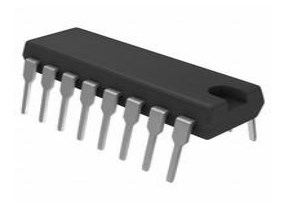 ULN2004A Darlington Array: Pinout, Equivalent and Datasheet
ULN2004A Darlington Array: Pinout, Equivalent and Datasheet29 November 20216096
![MSP430 Mixed-Signal Microcontroller: MSP430 Features, Pinout and Datasheet [FAQ]](https://res.utmel.com/Images/Article/099de344-e17e-49b9-9c53-cfa31c7fa36e.jpg) MSP430 Mixed-Signal Microcontroller: MSP430 Features, Pinout and Datasheet [FAQ]
MSP430 Mixed-Signal Microcontroller: MSP430 Features, Pinout and Datasheet [FAQ]13 January 20223363
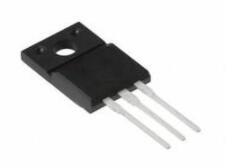 2SC4793 Transistor: 2SC4793, 2SC4793 Datasheet, Equivalent
2SC4793 Transistor: 2SC4793, 2SC4793 Datasheet, Equivalent18 December 202117763
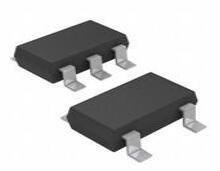 A1266 3D Hall-Effect Switch: Datasheet, Equivalent and Pinout
A1266 3D Hall-Effect Switch: Datasheet, Equivalent and Pinout20 October 20211915
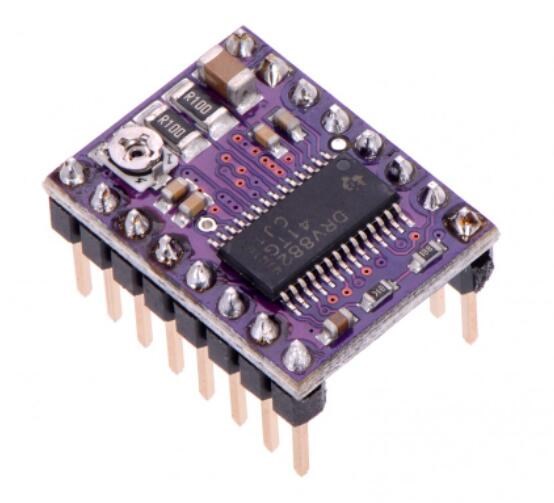 Everything you need to know about DRV8825 Stepper Motor Driver
Everything you need to know about DRV8825 Stepper Motor Driver28 April 20226425
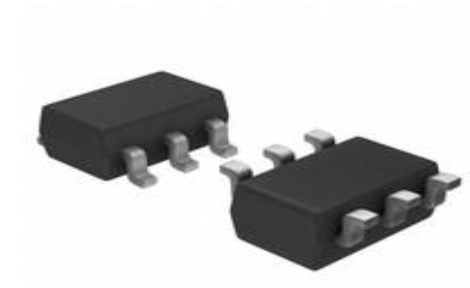 REG710NA-3/250: Pinout, Converter, Datasheet
REG710NA-3/250: Pinout, Converter, Datasheet18 February 2022677
 LM2903 Comparator: Datasheet, Schematic, and Application
LM2903 Comparator: Datasheet, Schematic, and Application07 September 20215547
 Audio Transformer-Types, Functions and Working
Audio Transformer-Types, Functions and Working27 January 202111615
 Four Proximity Sensors PK, Who can Win?
Four Proximity Sensors PK, Who can Win?08 April 20222023
 Always charge the battery to 100%? Stop it!
Always charge the battery to 100%? Stop it!15 October 20213597
 What is an Accelerometer Sensor?
What is an Accelerometer Sensor?20 April 202111652
 Introduction to Photonic Integrated Circuits and PIC Technology
Introduction to Photonic Integrated Circuits and PIC Technology22 October 202513966
 Intel Launches First-of-its-Kind Semiconductor Technician Certificate Program to Address Workforce Shortage
Intel Launches First-of-its-Kind Semiconductor Technician Certificate Program to Address Workforce Shortage28 September 20231711
 An Overview of Bipolar Transistors
An Overview of Bipolar Transistors27 August 20206267
 Does the Terminal Resistance of the CAN Bus Have to be 120Ω?
Does the Terminal Resistance of the CAN Bus Have to be 120Ω?19 April 202232997
ON Semiconductor
In Stock: 823
Minimum: 1 Multiples: 1
Qty
Unit Price
Ext Price
1
$0.050844
$0.05
10
$0.047966
$0.48
100
$0.045251
$4.53
500
$0.042689
$21.34
1000
$0.040273
$40.27
Not the price you want? Send RFQ Now and we'll contact you ASAP.
Inquire for More Quantity




